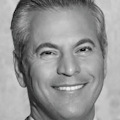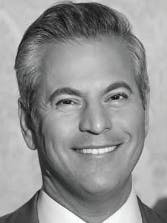What do pro sports teams and dental teams have in common?
Professional athletes are among the most admired and idolized people in our society. Tens of millions of Americans grow up dreaming of one day playing in the bigs or making it to the show. Few professions seem more exciting, glamorous, or financially rewarding.
Of course, the truth is, despite the fame and money, the life of a professional athlete is not without its downsides. Perhaps the biggest one is the risk of serious physical injury. When competing with large, muscular bodies running, throwing, and leaping at high speeds or tackling, blocking, and checking with ferocious power, you are only one play away from ending your career or perhaps being disabled for the rest of your life. As the team dentist for the NBA’s Detroit Pistons, I have been afforded an up close and personal view of just how physically dangerous the game of professional basketball can be.
While this might seem like a bit of a stretch, there are some similarities between athletic professionals and dental professionals. In the dental profession, we may not be household names or have stratospheric salaries, but the fact is that our compensation is well above the national average—despite working less than five days per week, in many cases. All in all, dentistry is a pretty good gig, isn’t it? But dental professionals, as with professional athletes, are also exposed to significant physical risk. And, alarmingly, it is a risk that most of us probably aren’t even aware of—the risk associated with toxic air hovering throughout our dental practices, day in, day out.
Are you sitting down?
Did you know that a report on workplace health based on a US Department of Labor study of 974 occupations involving more than 125 million American workers concluded that dental professionals have the unhealthiest job in America?1 Not just one of the unhealthiest jobs; the number one unhealthiest job. The main reason? The toxic cloud of bacteria, viruses, and other microscopic contaminants spewing into our office air virtually every working hour of every day. These pathogens emit from handpieces, ultrasonic scaling, prophy treatments, water lines, and ultrasonic cleaners, not to mention coughs and sneezes from our patients. Perhaps the scariest fact is that, unchecked, an airborne contaminant can linger in the office air for more than 40 hours.
I don’t know about you, but when I’m confronted with a serious problem, I make it a point to find a serious solution. And more often than not, the serious solution lies in finding a serious technology. Throughout my career, I have prided myself on being an early adopter of breakthrough dental technologies. My practices were among the first in the country to embrace technologies such as intraoral cameras, CAD/CAM impressions and restorations, water-based laser dentistry, and digital occlusal analysis. Now, we’re among the first practices in the country to address a solution to the problem of toxic air quality in dental practices.
Our solution
That solution—for me, at least—is the Surgically Clean Air air purification system. The company is based in Canada, which made sense to me considering that our friends to the north have generally been more environmentally conscious than we have in the US. Apparently this applies to the great indoors as well as the great outdoors.
As a health professional, I liked the sound of “surgically clean air.” It turns out that the term stems from the fact that these air purifiers incorporate a six-stage filtration process that captures and removes fine and ultrafine particulates, while also trapping and absorbing gasses and vapors. This six-stage filtration process also uses photocatalytics to destroy odors and allergens, a negative ion generator to reenergize the air before it exits the unit, and germicidal UV-C+ light to destroy the DNA of microorganisms such as bacteria, viruses, and mold.
The results
A recent article in Clinicians Report, “Make excellent air quality a priority in your practice,” appears to confirm that we made the right decision in choosing our air purification system.2 Clinicians using Surgically Clean Air’s Cascade unit (the model we have) gave it an 82% particulate removal efficiency rating and an “Excellent” rating for odor removal.
Interestingly, many professional sports teams—including the Toronto Raptors and Milwaukee Bucks in the NBA, the Boston Bruins and New York Rangers in the NHL, and the Baltimore Orioles and Oakland A’s in MLB—use Surgically Clean Air systems to keep their locker rooms smelling fresh and free of airborne contaminants. Professional sports team owners obviously have a huge incentive to keep their most important assets—their players—healthy. As dental practice owners, don’t we have a powerful incentive to keep our staff—and ourselves—healthy as well?
Summary
Professional athletes are constantly being evaluated based on their numbers: goals, rebounds, tackles, assists, home runs, touchdowns, and more. Likewise in the increasingly ratings-oriented world in which we work, there is more pressure than ever on dental professionals to deliver strong numbers too. Based on our experience to date, I have no doubt that enhancing our air quality will help ensure that continually improving our numbers—from patient ratings, to sick days, to the bottom line—will be a slam dunk.
References
- Kiersz A, Gillett R, Hoff M. Coronavirus is rapidly exposing the vulnerability of workers who perform physical services. Here are the 47 jobs that most put your overall health at risk. Business Insider. March 10, 2020. https://www.businessinsider.com/most-unhealthy-jobs-in-america-2017-4
- Make excellent air quality a priority in your practice. Health hazards by occupation (based on information from the US Department of Labor). Clinicians Report. 2019;12(3), addendum 2. https://www.cliniciansreport.org/uploads/files/1472/0319-RT-addendum-2-Air-Pur.pdf
About the Author

Robert DiPilla, DDS
Robert DiPilla, DDS, a graduate of the University of Detroit Mercy School of Dentistry, is a fellow of the International Congress of Oral Implantologists and American Academy of General Dentistry. He is assistant director for Aesthetic Advantage, and founder/president of the American Academy of Dental & Facial Rejuvenation. He owns dental practices in Michigan and Manhattan, New York, with a patient base that includes professional athletes and other celebrities.

